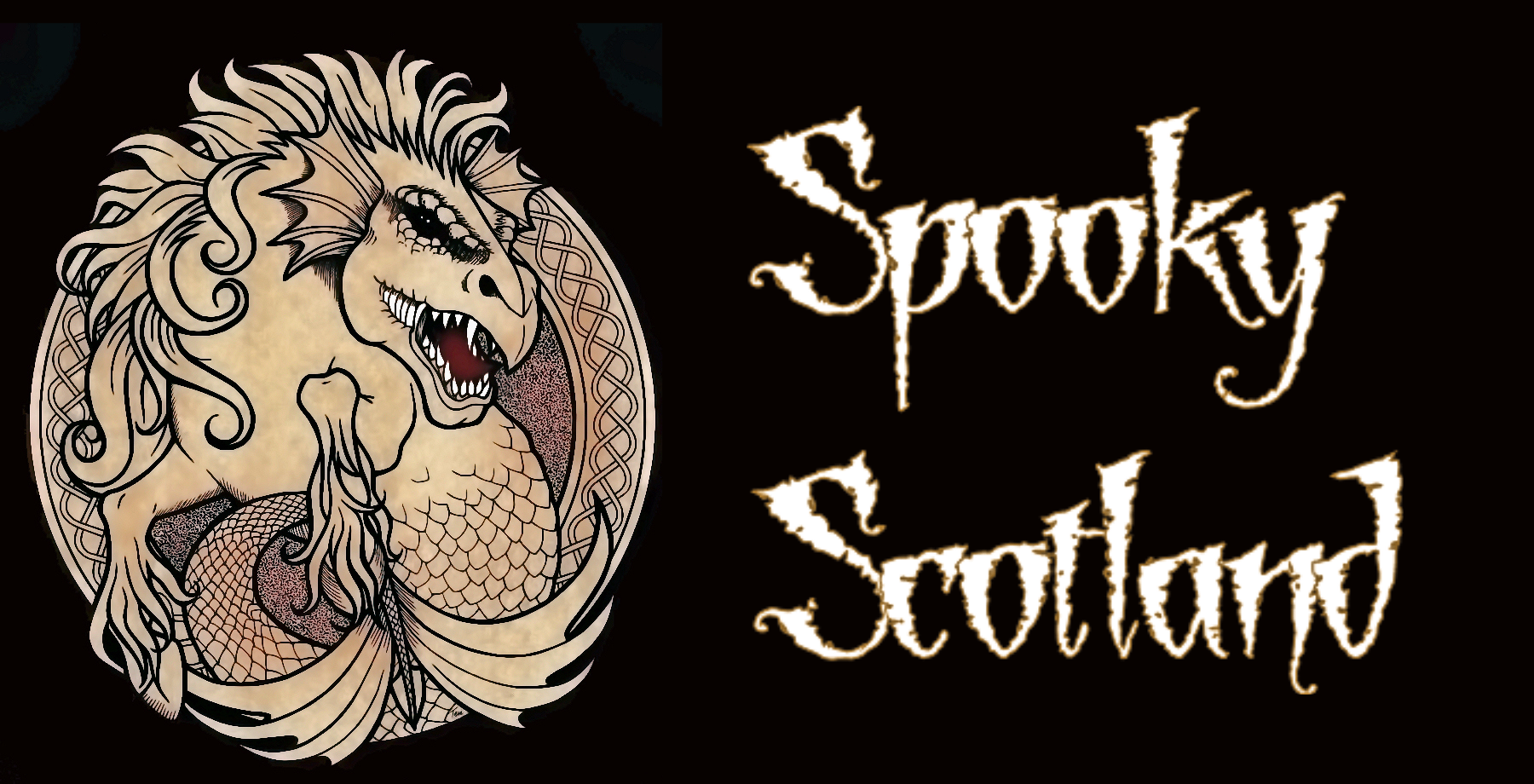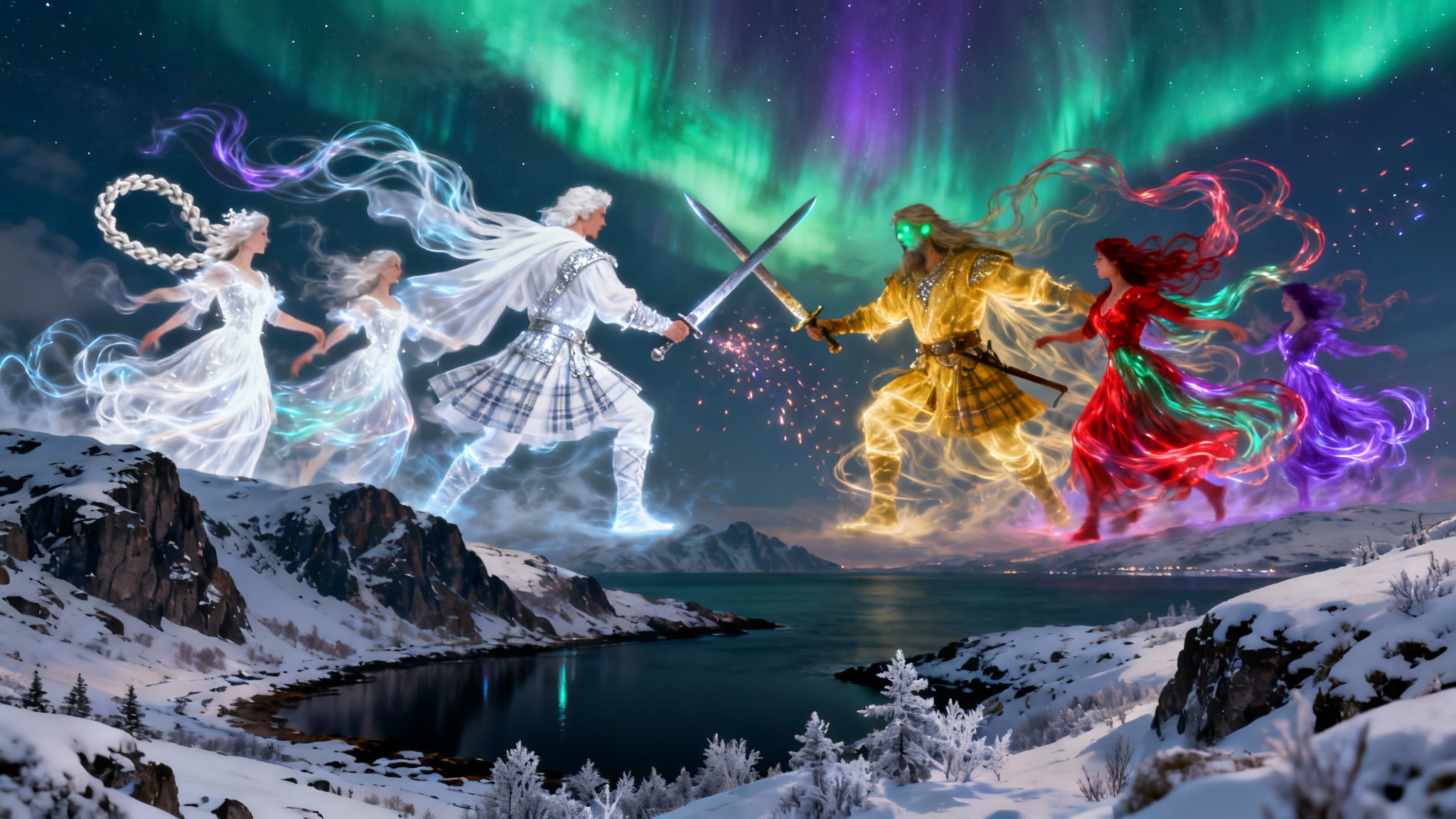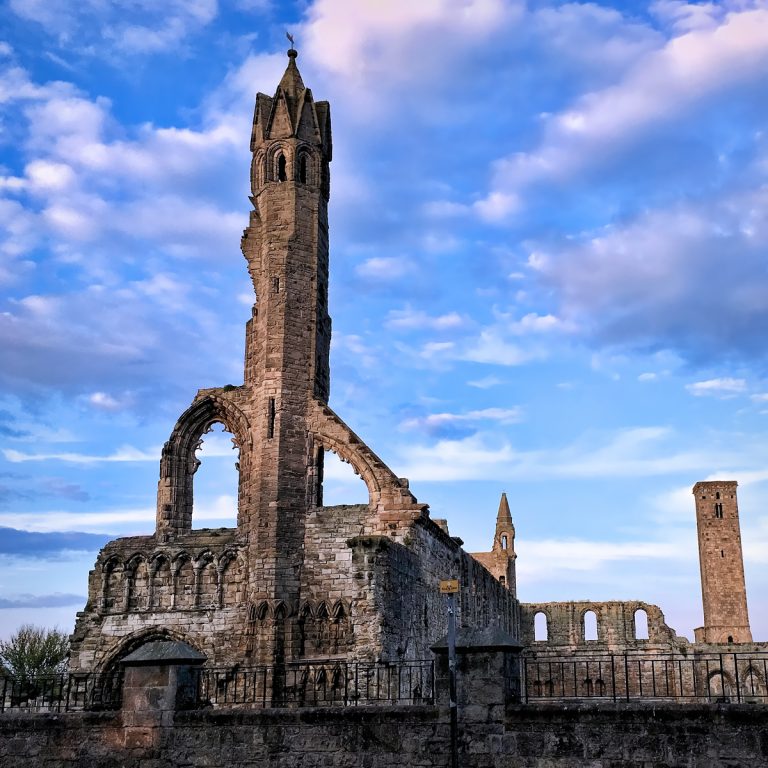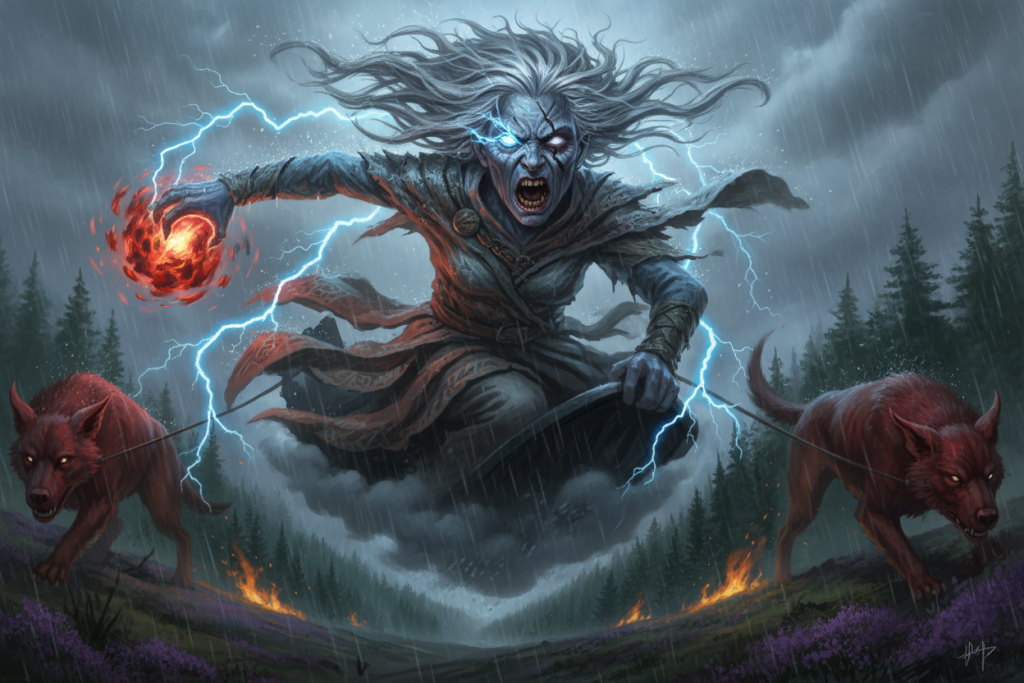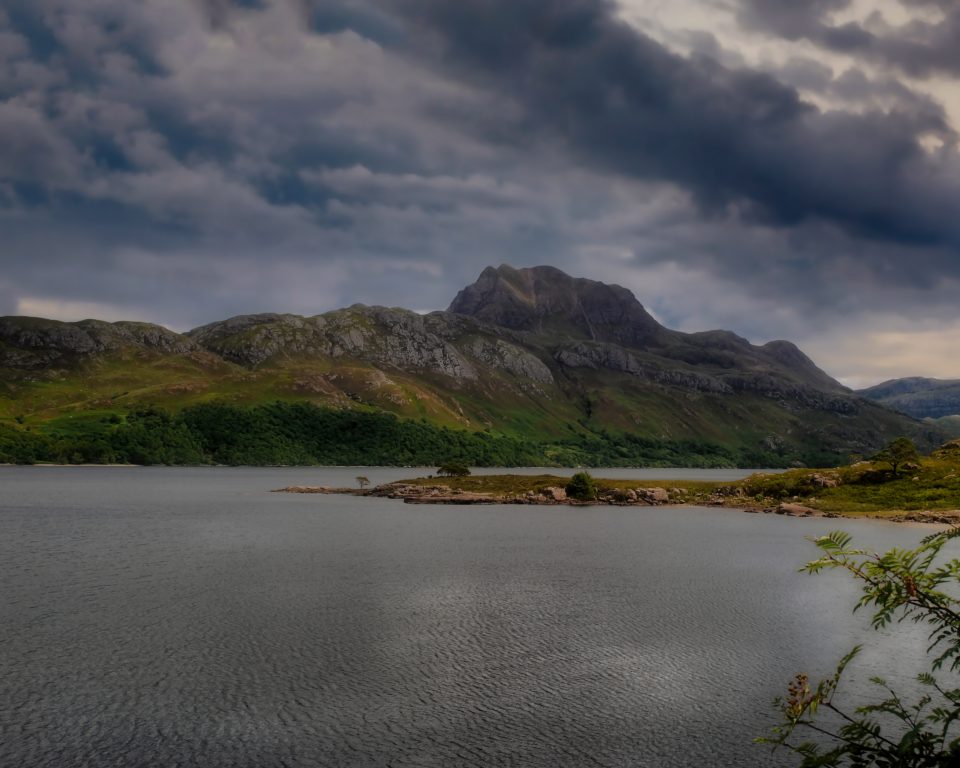The Sìthichean or faeries did not always live alongside humankind on the earth but danced in the heavens. They were ‘Na Fir Chlis’- ‘The Nimble Men’. They were the children and descendants of the Cailleach Beira, and they were frequently giant in size. The Nimble Men and their womenfolk, the Merry Maidens, belonged to two clans. One clan was clad in white and led by a mighty chieftain named Eangarra- ‘the Light-Footed’. The men of the other clan wore yellow, and their ladies dressed in reds and greens and purples. Their chief was Suilean-Uaine- ‘Green Eyes’.
The fairest of all the Merry Maidens was Brèagha. Brèagha loved to dance. But especially she loved to dance with Eangarra for he was the best dancer of all the Nimble Men. However, she had another admirer, none other than the other clan chief, Suilean-Uaine.
One dark, moonless night when the mountains were white with new-fallen snow and the valleys glistened with hoar-frost, all the northern sky was lit up in a multitude of colour by the Nimble Men and Merry Maidens, who came out to dance in honour of their queen the Cailleach Beira. As midnight approached, the heavenly host sat down. Eangarra went down on one knee before the fair maiden and proposed to her. Brèagha was delighted to accept.
Treachery
However, Suilean-Uaine was listening in on the star-struck lovers and in a fit of jealousy, ordered his clan to draw their swords and attack Eangarra’s clan. During the fighting, some of the faeries fell into the sea. These became Na Fir Ghorma- the Blue Men of the Minch, others became the kelpies and selkies and all these water Sìthichean fell under the reign of Seonaidh, God of Seaweed.
Then there were the Sìthichean that fell on solid ground, who became the Brownies, Glastig and the Ban Nighe and Righ Ban and Righ Dubh, the Kings of Day and Night.
Alas, when the fighting was over, Eangarra lay dead.
A smirk twisted on Suilean-Uaine’s lips. “Now you have no choice but marry me!”
“Never!” Brèagha screamed. Then she ordered Eangarra’s clansmen to pick up their swords and the battle recommenced.
Even now, on certain nights, you will see the Nimble Men performing their dance to the death in the Northern Skies. Some call the display, the Northern Lights and others the Aurora borealis, and to some, they are the Heavenly Dancers.
Scottish Faeries or Sìthichean
The tale above comes from the Gaelic folklore of the Western Isles and offers one account of how the Sìth came to be. The Scottish Sìth is not your Victorian fairy with wings or small and cute like Disney’s Tinkerbell. They are powerful supernatural beings and frequently malevolent. Most of the tales of these beings come from the folklore of the everyday working people. While the traditions of the Highlands (Gaelic) and Lowlands share common threads, each reflects its own landscape and history.
In the late nineteenth and early twentieth centuries, a folk revival spurred scholars to record stories from the “common folk.” Among Gaelic speakers, where oral tradition remained strong, collectors preserved a rich array of tales. Even so, the Highland Clearances had already scattered communities and erased many regional voices. In the Lowlands, the Reformation profoundly reshaped religious life, actively discouraging beliefs in supernatural beings outside of Christian doctrine and thereby weakening some strands of oral tradition. It was largely among the Lowland working classes that the witch trials raged, and with them the Christian category of “witch” was imposed on practices that earlier would have been understood simply as folk magic or local wisdom.
Origins of the Sìthichean
But where did the idea of faeries come from? Little survives of explicitly pre-Christian belief, but several strands are clear. Many communities practised a broadly animist worldview: rivers, rocks, and trees possessed spirits; places had guardians; and ancestors mattered deeply. The landscape still holds traces of divinities and place-bound beings: the Cailleach/ Carlin- Goddess of Winter; Brìde- Goddess of Summer; Scathach- Warrior Goddess of Death. The funerary caves around Covesea-children’s skulls in Sculptor’s Cave and adult remains in the Kittiwake and Deer Caves- attest to the veneration of the dead. One enduring hypothesis suggests that the Sìthichean reflect a melding of ancestor spirits and spirits of place, remembered and reinterpreted over centuries.
Christianity did not entirely erase these presences; it re-narrated them. Through a process of de-deification, older figures were downgraded or repurposed: Brìde became St Brigid, no longer a goddess but still venerated; heroic or semi-divine figures became merely mortal; others were vilified. The Sìthichean themselves would be cast as demons, or as beings suspended between heaven and hell—neither saved nor damned. Even the Halloween “witch” carries distant echoes: the Cailleach Bheur’s face is often described as blue, and while the modern witch is painted green. Could this be a result of the Gaelic word gorm, which means blue but, in some instances, can also mean green?
Crucially, those who practised folk magic in pre-Christian Scotland would not have called themselves “witches.” They might have been healers, diviners, shamans, wise folk, priests or priestesses-people with roles and knowledge integral to community life. “Witch,” as a label, is largely a Christian construct.
Multiple Strands of Origin
As for origins, Sìth-lore likely braids multiple strands. These include the personification of spirits of place and the honoured dead, remembered through figures like brownies, glaistigs, gruagachan, bean-nighe, and the Daoine Sìth bound to particular hills, fords, caves, and coasts. Other influences are diminished divinities or heroic races remembered in folklore, Christian overlays that demonised or domesticated older beings, and social explanations for illness, infant mortality (the changeling motif), lost time, second sight, and the dangers of moor and sea.
Across Highland and Lowland traditions, people approached the Sìthichean with euphemism and respect— “the good neighbours,” “the people of peace”, “the fairfolk”, “the little people”, or the peedie or peerie people if you came from Orkney or Shetland—acknowledging a world where humankind and faerie-folk lived side by side. The word ‘elf’ is synonymous with the word ‘faery’ in Scotland. The people of pre-industrial Scotland had an uneasy relationship with the Sìthichean. They did not find them coy, merry or playfully mischievous. Rather, they were dangerous, capable of inflicting harm or even death on both humans and their livestock. Precautions needed to be taken to keep them at bay or, at the very least, placated. The winged Victorian fairy is a late, romantic invention and somewhat insipid compared with the older, more powerful and dangerous Scottish Sìthichean.
The Otherworld
It is important when exploring the world of the Sìthichean to understand the complex nature of the Otherworld. In Gaelic tradition, the Otherworld is not just one place; it is a collection of overlapping realms. Robert Kirk and George Henderson hinted at this, and later, folklorist John Gregorson Campbell clearly identified three main Otherworlds. First, there is the fairy world of the Sìth. This realm deals with everyday life- it is here we meet creatures that mix human and animal traits like mermaids or water-horses. Second, there is the spirit world, home to the dead, ghosts, and second sight, where omens and premonitions often bring grim warnings. Finally, the religious Otherworld involves witchcraft and the Devil, a place of stark choices between good and evil, healing and harming.
All three of these worlds blur the lines of time and space, often distorting time for those who visit, much like the Rip Van Winkle story which has Celtic roots. Yet, time also has practical meaning in the Celtic calendar, with festivals and seasons marking when the veil between worlds is thinnest.
A Mirror of the Human World
Highland and Hebridean tradition also informs us that life in the faery Otherworld mirrors our own. Visitors report the Sìthichean engaged in familiar work such as blacksmithing, crafting farm tools and fairy arrows, keeping livestock, dancing and feasting, then sleeping when tired. Fairy women spin and weave, grind grain at the quern, milk and churn, cook and bake, and sing as they work. Their homes are inside hills, brightly lit and richly furnished, with extravagant clothing and tables set with silver and gold. Their diet is mixed. They draw the toradh, the substance, from human food, leaving the husk behind, but they also eat hrisgean, the silverweed root once called the Seventh Bread, favour fresh heather tips, and drink milk from goats and red deer hinds. Spilt cow’s milk is considered theirs by custom.
On moonlit nights, the Sìthichean dance on dark green fairy rings beside the síthean (Faery mounds). These greens must never be ploughed or fouled, or misfortune follows. One Caithness tale tells of a murrain or illness, striking a crofter’s cattle after he disturbed a fairy knoll. This was only cured by passing the cattle through a neid-fire. Ronald Black argues that these Otherworlds are more than just old superstitions; they are powerful metaphors. They helped people understand and cope with things that were otherwise inexplicable or frightening. This might include illness, death, or the dangers of daily life. By telling stories about changelings, encounters with spirits, or the consequences of certain actions, communities created a framework for moral guidance and social order.
Faery Mounds
Prehistoric graves, cairns, brochs and souterrains were all said to be faery mounds, also known as knolls or knowes or sithean. These were homes to the Sìthichean and thus part of the Otherworld. When Helen Cumming of Cardhu was stilling illicit whisky, a small man appeared at her door. When he left in a storm, he was seen heading to the ‘Shean of Mannoch’, a fairy mound near Knockando. Domhnull Mor, was said to live in two Sithean, one on either end of Loch Morlich. Isobel Gowdie reported visiting the Queen of Elfland in Faery caverns beneath the Downie Hill near Auldearn.
The Courts of the Sìthichean
The Sìthichean are often described as belonging to two courts that mark a spectrum of behaviour rather than a strict good–evil divide. The Seelie Court are the “blessed” neighbours who may warn travellers, reward courtesy, and accept fair exchange. However, they will still avenge insults and punish breaches of etiquette. The Unseelie Court, sometimes called the Host or sluagh, is the unblessed company who take advantage of the unwary, bringing illness or mischance. They are more likely to harm without cause. In practice, the line is fluid. A being that helps one household may spite another that blocks a path or withholds a customary offering. Courtesy, caution at liminal times, and respect for local taboos matter more than labels, because “friendly” in fairy terms does not mean safe.
What the Sìthichean Look Like
Scottish Sìthichean are shaped by glamour, so appearance is fluid. Many accounts describe them as well‑proportioned and striking, with bright eyes and abundant hair, often dressed in green or red. Beauty tends to have an uncanny edge. Perfect features may feel not quite human, or details that betray them on a second look. Size varies from small folk to human‑sized, with rare giant‑like figures in island lore. Clothing signals rank and role more than fashion. Thus green for hill and wood, pale or grey for solitary beings, and simple working dress for household helpers like the brùnaidh. Finery can be exquisite yet oddly timeless, with silver‑bright clasps and embroidered shoes that leave no mark. Wings are not a feature of Scottish faeries. Animal traces sometimes show through the glamour—webbed fingers, a hoof beneath a hem, or bindweed caught in the hair of a shape‑shifting water spirit.
Variety in Faery-kind
The Sìthichean come in all shapes and sizes. Some are shape-shifters. Some live on land, other in water. This is a short list of examples:
- Brùnaidh (brownies): Quiet household helpers who sweep, mend, and keep the dairy right in return for simple food, usually milk or cream. They leave if insulted or if you try to “pay” them with clothes.
- Glaistig and gruagach: Farm and herd guardians. They expect nightly offerings of milk and protect cattle and children when respected, but punish neglect or mockery.
- Uruisg: Solitary, wild‑haunting beings of pools and high corries. They can aid or alarm; contact is best kept courteous and brief.
- Selkies: Seal‑folk who shed their skins to take human form. Tales often turn on stolen skins, coerced marriages, and the pull between sea and shore.
- Kelpies and each‑uisge: Water spirits that lure with the form of a fine horse or a handsome stranger. They drown riders and drag them to lochs or rivers; weeds in the hair can betray them.
- Ghillie Dhu: A shy woodland spirit of the north, dark‑haired and gentle to respectful travellers, especially children.
- Baobhan Sìth: Green‑robed night visitors who invite men to dance, then drink their blood. Flawless manners won’t save you here; avoidance is safest.
- Sluagh (the Host): An Unseelie airborne company associated with sickness, theft of soul or strength, and night processions. Keep doors and windows barred at dusk and avoid calling them.
- Fairy dogs: Often green, with a three‑bark death omen in some Highland tales. They can range from baleful to helpful, depending on the story.
To be Continued…
Scottish faery lore is a huge topic- there have been whole books written on the subject! Our next article will explore Faery Life– what day-to-day life was like for the Sìthichean and their human neighbours. In our third article, we will look at kidnappings, changelings and the Faery Rade.
